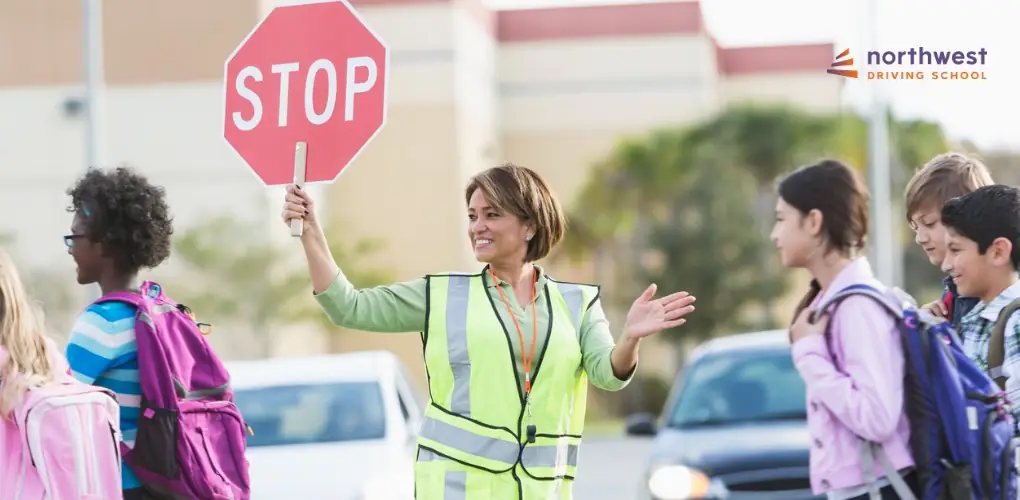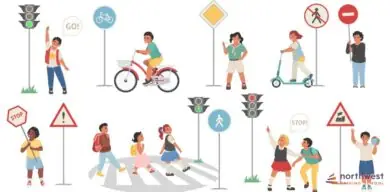- Traffic School
How To Perform An Emergency Stop

One of the most important driving lessons you will almost certainly be tested on in your driving test is your ability to perform an emergency stop. In order to pass your test, you will need to demonstrate that you can perform an emergency stop when asked by your instructor and maintain control over your vehicle while you do it.
Given how important this maneuver is in real life and in terms of passing your driving test, we’ve compiled a short guide to what an emergency stop is and how you perform one.
Read More: What Factors Affect Stopping Distance?
Table of Contents
What Precisely Is An Emergency Stop?
An emergency stop is a braking maneuver performed in response to hazards on the road that require you to stop suddenly. You might perform an emergency stop if someone or something suddenly crosses the road in front of you, if the car in front stops or stalls if someone suddenly pulls out in front of you, or if you notice a significant environmental hazard on the road, such as a large pothole or something that might damage your car.
During your test, your examiner will ask you to pull over to the side of the road and they will then explain that you will now be performing an emergency stop somewhere on the road ahead. As you proceed, the examiner will raise their hand and you will need to bring the car to a standstill as fast as you can without losing control of the vehicle, exactly as if one of the abovementioned hazards occurred.
How To Do An Emergency Stop
The AA suggests the following steps for performing a controlled emergency stop in a manual car:
- Stop without checking your mirrors: this will increase your stopping time and slow your reaction time
- Brake firmly, but don’t slam your foot down on the pedal
- Put your clutch down just before you stop to prevent stalling
- Always keep both hands on the wheel to control and prepare for the next movement. In a real-life scenario, this might be moving the car in a different direction, for example.
- Move away safely after checking all mirrors and blind spots
Stopping Distances
One of the key things to bear in mind when considering an emergency stop is your stopping distance. Not only is stopping distance a part of your theory test, but observing the correct stopping distance can save lives.
The RAC suggests using the following metric for calculating the correct stopping distance:
All you need to do is multiply the speed by intervals of 0.5, starting with 2. That’ll give you the stopping distance in feet, which is acceptable for the theory test. For example:
20mph x 2 = 40 feet
30mph x 2.5 = 75 feet
40mph x 3 = 120 feet
50mph x 3.5 = 175 feet
60mph x 4 = 240 feet
70mph x 4.5 = 315 feet
There are 3.3 feet in a meter, so divide the distance in feet by 3.3 to get the stopping distance in meters.
What To Do After An Emergency Stop?
Once you have performed an emergency stop, you must check your mirrors and blind spots before pulling out again. Making an emergency stop will almost certainly disrupt the traffic behind you. This means that it is vital that you are aware of the position of other motorists, motorbikes, cyclists, and pedestrians before moving off. Due to your position on the road, a signal isn’t needed and may even be seen as misleading to other drivers.
Moving off without checking your mirrors and blind spots after an emergency stop will always result in your failing your driving test.
Why Do People Fail The Emergency Stop?
- Slow reactions
- Failing to stop fast enough
- Losing control and skidding
- Taking your hands off the wheel
- Using the handbrake before the car has stopped
- Failing to carry out checks and observations
Get Ready to Drive with Northwest
Learning how to do an emergency stop is super important for your driving test and keeping safe on the road. This is where Northwest Driving School comes into play. We’re all about giving the Las Vegas community top-notch driving lessons, thanks to our team of experienced teachers. We ensure everyone teaching you has been checked thoroughly and all our cars are up to scratch with DMV safety standards.
At Northwest, we’re all about making learning fun and effective. Whether in the classroom or out driving, we’ve got you covered with engaging lessons that really stick. We are proud that 98% of our students pass their test on the first attempt. Ready to hit the road the right way? Give us a shout at (702) 212-5667, and let’s get you started with some of the best driving lessons in Vegas.



